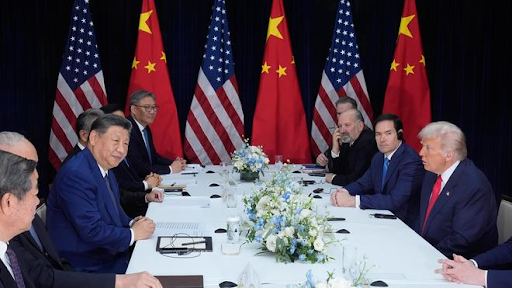Description
Introduction:
- Thirty-six years after it first began, the South Asian Association for Regional Cooperation (SAARC), appears to be all but dead in the water.
- The year 2020 marked the sixth year since the leaders of the eight nations that make up SAARC were able to meet.
- On the SAARC charter day on December 8, where Prime Minister Narendra Modi made it clear that India’s position on cross-border terrorism from Pakistan that led New Delhi to refuse to attend the SAARC summit in 2016 in Islamabad, is still in place.
- This indicates that the grouping, which cannot convene unless all leaders agree to meet, is unlikely to do so in the near future.
The shadows over the meets
- Over the past year, India-Pakistan issues have impacted other meetings of SAARC as well, making it easier for member countries, as a fragmented group rather than a collective.
- However, the events of 2020, particularly the novel coronavirus pandemic and China’s aggressions at the Line of Actual Control (LAC) shone need to review and reverse this trend.
- India’s problems with Pakistan on terrorism, territorial claims and on its role in blocking SAARC initiatives on connectivity and trade are well known.
- India’s refusal to allow Pakistan to host the SAARC summit because of those problems is akin to giving Pakistan a ‘veto’ over the entire SAARC process.
- The insistence is particularly puzzling given that Mr. Modi and his cabinet ministers continued to attend Shanghai Cooperation Organisation (SCO) meetings along with their Pakistani counterparts.
- While China’s incursions in Ladakh and the Galwan killings constituted the larger concern in the year, India did not decline to attend meetings with the Chinese leadership at the SCO, the Russia-India-China trilateral, the G-20 and others.
- No concerns over territorial claims stopped the government from engaging with Nepal either, despite Mr. K.P. Sharma Oli’s decision to change Nepal’s map and Constitution to include Indian territories.
- In a year when the pandemic has forced most multilateral summits to go online, it is inexplicable that India cannot attend a virtual SAARC summit hosted by Pakistan, which would allow the South Asian process to move forward.
Pandemic-caused challenges
- Second, reviving SAARC is crucial to countering the common challenges brought about by the pandemic.
- Comprehensive approach for Pandemic Preparedness and Response to COVID-19 in South Asian Countries is necessary for the distribution of vaccines, as well as developing cold storage chains for the vast market that South Asia represents is needed.
- The pandemic’s impact on South Asian economies is another area that calls for coordination.
- Apart from the overall GDP slowdown, global job cuts which will lead to an estimated 22% fall in revenue for migrant labour and expatriates from South Asian countries, there is an expected loss of about 10.77 million jobs and $52.32 billion in GDP in the tourism sector alone from the impact of COVID-19.
- South Asian countries should work as a collective to set standards for labour from the region, and also to promoting a more intra-regional, transnational approach towards tourism, citing successful examples including the ‘East Africa Single Joint Visa’ system, or similar joint tourism initiatives like in the Mekong region or the Caribbean islands.
A time for regional initiatives
- In the longer term, there will be a shift in priorities towards health security, food security, and job security, that will also benefit from an “all-of” South Asia approach.
- The impact of COVID-19 will be seen in broader, global trends: a growing distaste for ‘globalisation’ of trade, travel and migration all of which were seen to have helped the pandemic spread from China, as well as a growing preference for nativism, self-dependence and localising supply chains.
- While it will be impossible for countries to cut themselves off from the global market entirely, regional initiatives will become the “Goldilocks option” (not too hot and not too cold), or the happy medium between globalisation and hyper-nationalism.
- It would be important to note therefore, that as the world is divided between regional trade arrangements such as new United States-Mexico-Canada Agreement, or USMCA (North America), the Southern Common Market, or MERCOSUR for its Spanish initials (South America), the European Union (Europe), the African Continental Free Trade Area, or AfCFTA (Africa), the Gulf Cooperation Council, or GCC (Gulf).
India’s steps, more bilateral
- In contrast, India stepped up its health and economic diplomacy in the region, but apart from one SAARC meeting convened by Mr. Modi in March, these have been bilateral initiatives, not a combined effort for South Asia.
- These are some of the reasons that led all SAARC leaders to urgently call for the revival of SAARC during their charter day messages.
- Despite the despondency, the rationale for its existence remains intact: while history and political grievances may be perceived differently, geography is reality.
- Seen through Beijing’s prism, India’s SAARC neighbourhood may be a means to contain India, with the People’s Liberation Army strategies against India over the LAC at present, or in conjunction with Pakistan or Nepal at other disputed fronts in the future.
- New Delhi must find its own prism with which to view its South Asian neighbourhood as it should be: a unit that has a common future, and as a force-multiplier for India’s ambitions on the global stage.
https://www.thehindu.com/opinion/lead/reclaiming-saarc-from-the-ashes-of-2020/article33561545.ece?homepage=true







